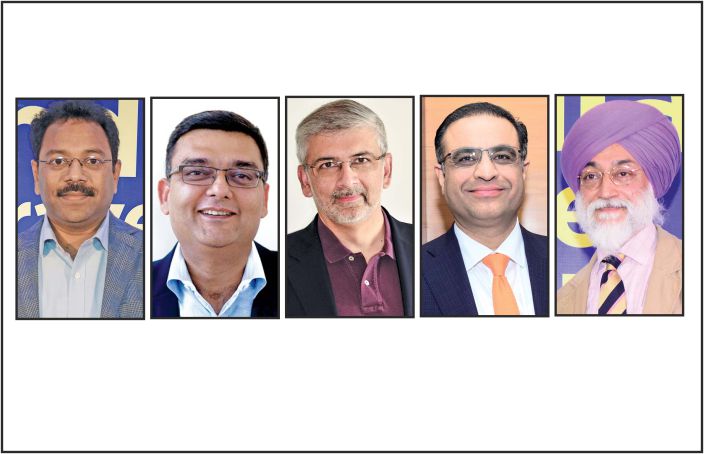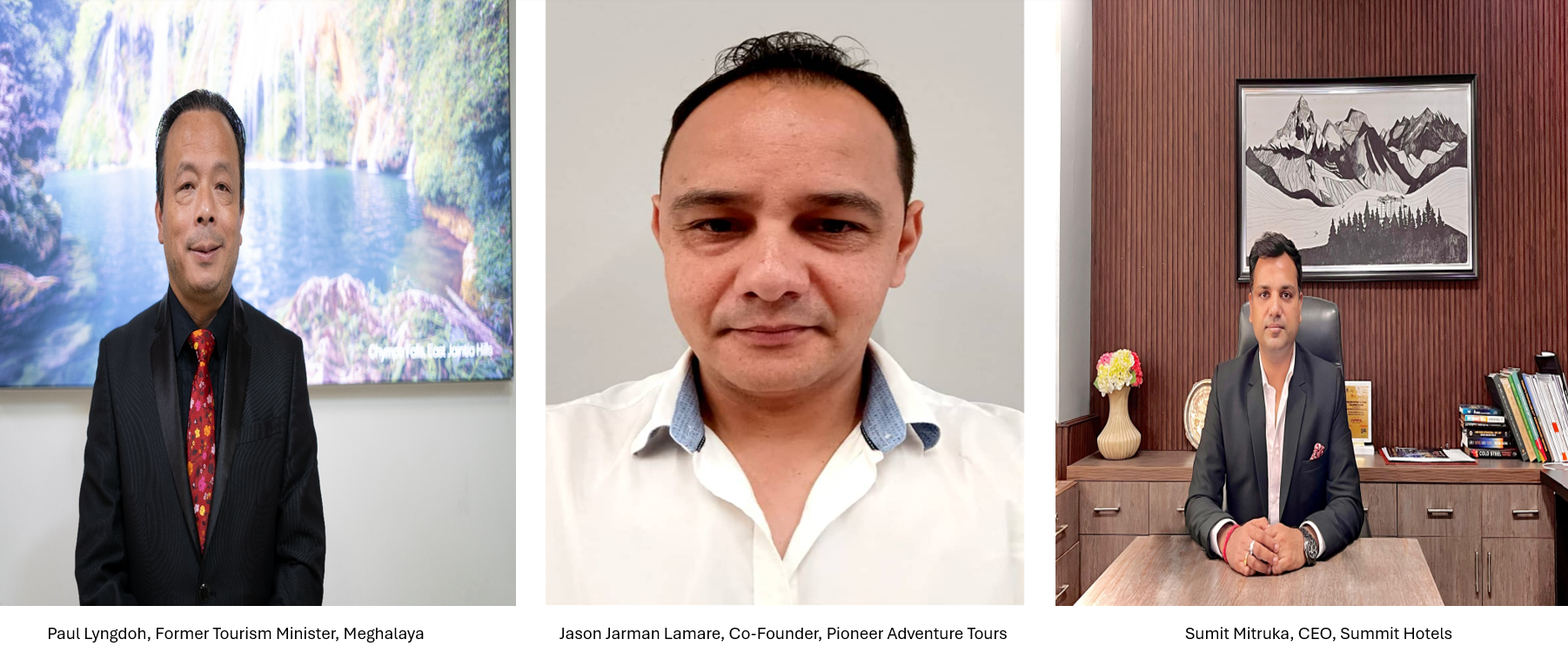The second India Travel Summit organised by Thomas Cook India in New Delhi recently saw the stalwarts from the Indian tourism industry discussing on how the recently-launched Incredible India 2.0 might change things for India, or if more work is needed, as well as other plaguing issues that prove to be a challenge to get enough inbound numbers to the country.
NISHA VERMA
Suman Billa, Joint Secretary Ministry of Tourism, Government of India
We believe that a good tourism campaign should define how a country is perceived around the world. A campaign should not narrow down to sell hotel rooms, instead, we should be looking at how much we are pitching in for India. I think Incredible India should become the mother campaign and Make in India and other such campaigns should be drawing from that strength. We need to go out and create that framework in the mindset of the people that India is a great wonderful place to be in. There needs to be a lot of work to be done. There are two fundamental changes that we are looking at currently. Firstly, we have done a generalised campaign till now, under which we have been running one common film that is a collage of everything that is wonderful in the country, and playing it in all the markets. We need to change that and create a systematic campaign. The communication has to be market specific, and we need to create that sensitivity around what that market wants. Secondly, we need to create campaigns that are product specific because India has a range of tourism products, but the challenge is that it’s extremely difficult to market, because those planning to visit the country have many options, which overwhelms them. The same happens when we want to market India as there are so many things to do. Hence, we are creating product specific creatives, not just on general media but also on digital media, which is one of our main strategies to tap the travellers.
Dipak Deva, Managing Director, Destination Management, Sita, TCI and Distant Frontiers
India tourism has come a long way, but we still need to cross the 10 million mark of inbound tourists and then head for the 20-million target. Now, apart from targeting certain high spend markets and e-Visa that has been a big gamechanger, we need to have easier and liberal policies as well as good aviation access. However, we need to get India ready for the future and I believe that the Incredible India 2.0 campaign is going to put us on a different platform altogether. While we will be getting customers, the new campaign would change the mindset of people in the coming years. Another thing we need to be ready for is what happens 5-7 years from now. While India is a difficult destination to promote, we need to see that the average stay of international tourists in the country ranges between 12 and 14 nights, which is much more than many other countries. While infrastructure is an issue currently, in terms of aviation, the government needs to open skies and allow increased flight connectivity to smaller destinations like Jaipur and Goa. The hotels around the country saw 65 per cent occupancy last year, which was highest since 2007-08; ARRs were up by 2.4 percent, REVpars were up by 6 per cent, and the number of rooms in the country are increasing by the day. From 24,000 rooms in 2000, we have up to 119,000 hotel rooms now and we still need more. However, a lot of inbound depends on beach tourism, and owing to CRZ guidelines in the country, not many hotels are coming up on beaches around the country, which remains a big concern for the industry. Another big challenge is the development of convention centres around the country, for which private investment could play a big role in attracting tourists.
Sanjiv Kapoor Chief Strategy and Commercial Officer, Vistara (Tata – Singapore Airlines)
While many think India needs to open its skies and have more bilaterals for increasing flights into the country, I don’t think it is the case. There are many countries with which we have open skies. However, I think there is an excess of supply currently from India, because of which the airfare is very low. It is cheaper to fly to Dubai and even a few European countries from India than flying domestic, and domestic fares are cheap too as compared to global standards. The pricing is an indicator of the demand and supply balance and the fares are so low that it shows that the demand is very high, because we drop fares to fill the seats. I don’t think our challenge is not having enough flights. We have a great destination in India, but it needs work in terms of infrastructure, cleanliness, ease of travel and commute. The country gets good attendance from luxury travellers who travel in chauffeured cars, opulent hotels and escorted visits; as well as from backpackers like students from Israel. However, for the vast majority of mid-segment travellers, India is a very difficult destination. Many other smaller countries are doing better than us and hence, we need to have a tourism infrastructure, which is just not the tourism ministry’s job. We need participation from all quarters. In terms of aviation and hotels, it is world class and much better than many other places. For Incredible India 2.0 we need to create a safe environment where anyone can roam around freely anywhere in India, without any hesitation. I think until we fix all these problems, it’s going to be difficult for us to leave a good impression amongst the tourists coming to India. We need to create an environment in India where people feel safe and comfortable.
Kapil Chopra, President, The Oberoi Group
The biggest challenge in India, according to me are the hotel rates. In terms of rates of resorts, we are comparable globally, but the luxury hotel rates in cities are lowest in the world. The highest rate for a city hotel in India goes between The Leela Palace, New Delhi, Taj Mahal Hotel in Mumbai, or The Oberoi, Gurgaon, with an average room rate of around USD 250 throughout the year. It is half of what city hotels charge globally. That leads to our second problem—the investments that have gone into the hotel sector make most of the companies incur losses. Amongst the four major hotel chains in India, two have recorded quarterly losses. The bigger challenge is not further investment into hotels and capital constraints, but return on capital. More people want to open up hotels, but long gestation periods, licensing and the time it requires to open a hotel, prove to be a hurdle. In terms of beach hotels, while it’s difficult to even see the ocean from a hotel in Goa, hotels in Maldives offer rooms in the middle of the sea. Until CRZ guidelines in India are taken out, we will be killing beach tourism completely. In Mumbai, if only 10 cruise ships are docked on the coastline, the entire infrastructure around the area could change and there will be increased room nights, shopping, restaurant visits and there will be a vibrant economy sustaining on that. Capital runs after vision. Even in terms of convention centres, the entire economy of a place changes if it has a state-of-the-art convention centre, including hotel business.
Mandip Singh Soin, Founder & Managing Director, Ibex Expeditions and Founder President, Ecotourism Society of India
The question here is that how we can create a balance between growth of tourism and sustainability. I am hopeful that the campaign would draw focus on that as well. We know that many countries have hotels right on the beaches, but that does not mean that it is the right way to go because many times the effect comes in 10-20 years down the line. Australia today has lost its Great Barrier Reef owing to increased tourism activity. Timely intervention could have saved it. One should abide by the precautionary principle, as the coastline is shifting and coming nearer to the shore could be dangerous to the tourists as well. The same goes for mountains. We need to educate the tourists and tell them that environment is the king and not the customer. They will understand as everyone has an innate sense of responsibility, and they would respect us for the same. I have been running camps in the Himalayas for 38 years and have never had a camp fire, as it would mean taking the wood, which is the livelihood of locals there, away from them. When we communicate it to the travellers, they respect it. The industry needs to bring in a little balance between what the scientists suggest and what they plan to construct, and I am sure customers will be happier and feeling better about doing things in the right way.
 TravTalk India Online Magazine
TravTalk India Online Magazine





